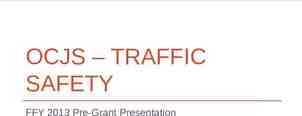UNIT 20: UNDERSTANDING MENTAL WELLBEING By Izel Alemdar and
8 Slides48.61 KB
UNIT 20: UNDERSTANDING MENTAL WELLBEING By Izel Alemdar and Willow Peddy
Strengths and weaknesses of using classification systems Strengths It allows us to see the relationships between things that may not be obvious. Classifying variables in an individuals life, allows us to evaluate which one has the greatest impact. Being able to categorize patients in a hospital, in order to give the most effective care to the patients that need it most. Weakness Have a subjective judgment, which participants may or may not agree with. There is a artificial limit to how we categorize things. Some things can be categorize wrong, which can lead to arguments about where the object belongs. https://www.enotes.com/homework-help/what-advantages-disadvantagesclassification-548875
What is the DSM-5 and who uses What it? is it? https://www.autismspeaks.org/dsm-5/faq The DSM-5 was Published by the American Psychiatric Association (APA). It stands for the Diagnostic and Statistical Manual of Mental Disorders and is used to diagnose mental and behavioural conditions. Who uses it? http://www.abc.net.au/health/thepulse/stories/2013/05/23/ 3766048.htm The DSM-5 is essential for psychiatrists and mental health professionals. The DSM-5 allows them to diagnose, and then treat, people who come to see them with nothing more than a list of signs and symptoms.
DSM-5 Strengths and Weaknesses Strengths Weaknesses Standardization of diagnoses helps to ensure that clients receive appropriate, helpful treatment regardless of geographic location, social class or ability to pay. Critics believe that it is an oversimplification The diagnostic checklists help ensure that different groups of researchers are actually studying the same disorder. Can have a misdiagnosis Using the diagnostic criteria contained Stigmatization in the DSM, the therapist can develop a quick frame of reference, which is then refined during individual sessions. https://www.verywell.com/dsm-friend-or-foe-2671930
What is the ICD10 and who uses it? What is it? – althit.techtarget.com/definition/ICD-10-CM – CD-10-CM is based upon the International Classification of Diseases, which is published by the World Health Organization (WHO). The ICD10 uses unique alphanumeric codes to identify known diseases and other health problems. Who uses it? – althit.techtarget.com/definition/ICD-10-CM – According to WHO, physicians, coders, health information managers, nurses and other healthcare professionals also use ICD-10-CM to assist them in the storage and retrieval of diagnostic information. ICD records are also used in the compilation of national mortality and morbidity statistics.
ICD10 strengths and weaknesses Strengths Weaknesses Increases the attention to Doesn’t work when detail there’s little to no information about the patient. Better research Long training process More resource utilization Can be time-consuming http://aihtedu.com/blog/icd-10-benefits-and-challenges/
How classification systems has contributes to diagnosing autism Autism cannot be diagnosed through a simple blood test or examination. Instead, autism is diagnosed using observation and looking at developmental history. There are two main diagnostic criteria that set out the characteristics of autism The International Classification of Diseases version 10 (ICD-10) which is written by the World Health Organization The Diagnostic and Statistical Manual of Mental Disorders version 5 (DSM-5), which is written by the American Psychiatric Association.
Diagnostic Manual ICD-10 DSM-5 Diagnostic: terms Pervasive Developmental Disorders (PDD) – a category which includes the following separate diagnoses: - Childhood autism - Atypical autism - Rett's Syndrome - Asperger syndrome - Pervasive developmental disorder, unspecified Autism Spectrum Disorders: this new umbrella term is a single diagnosis which covers most of the terms listed under ICD-10. Rett's syndrome is not included as its genetic basis has been identified and it is no longer diagnosed through observation. Criteria Three main areas: - Communication - Social interaction - Restricted, repetitive, and stereotyped patterns of behaviour Two main areas: - Communication and social interactions - restricted, repetitive, and stereotyped patterns of behaviour and sensory issues.













